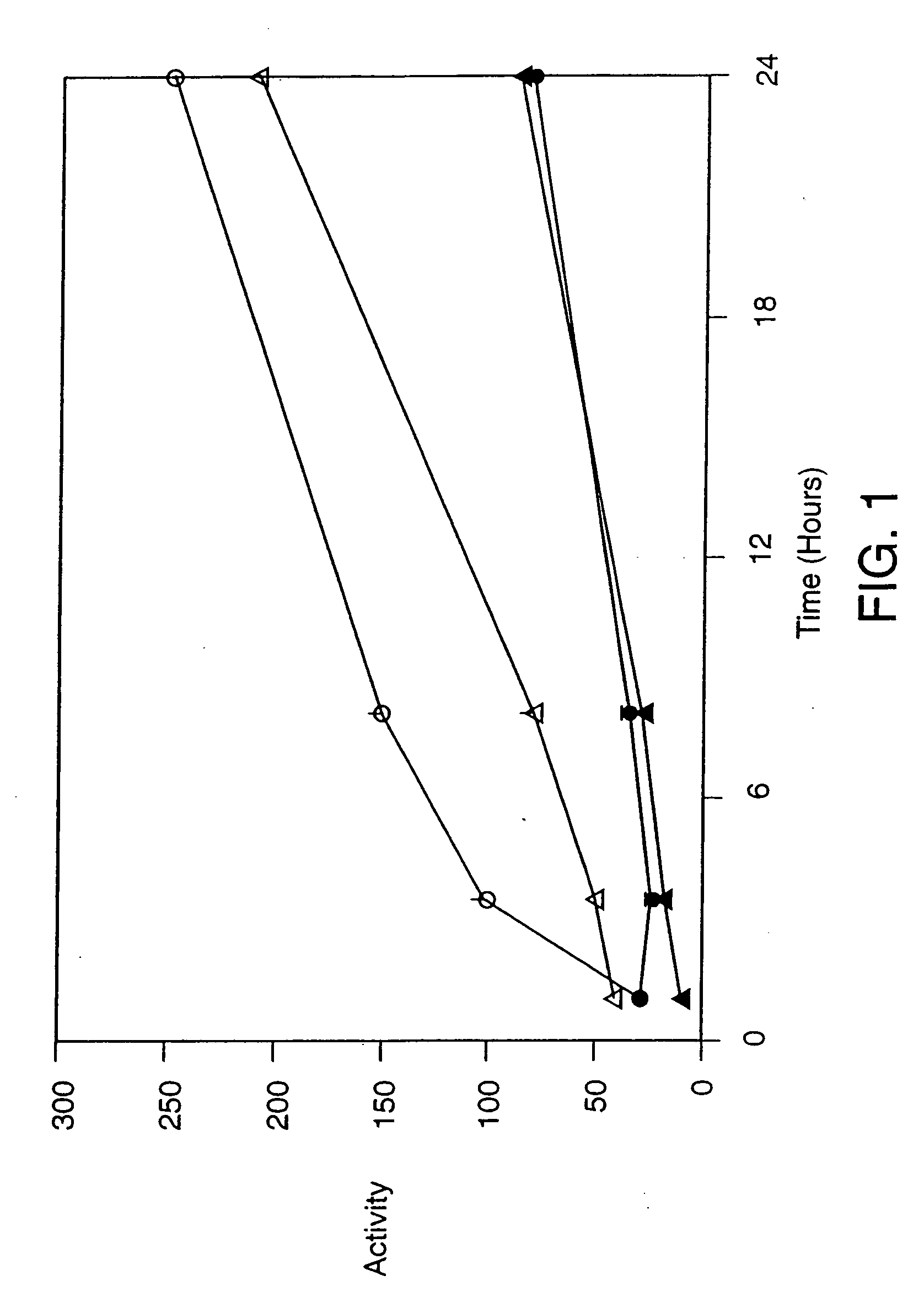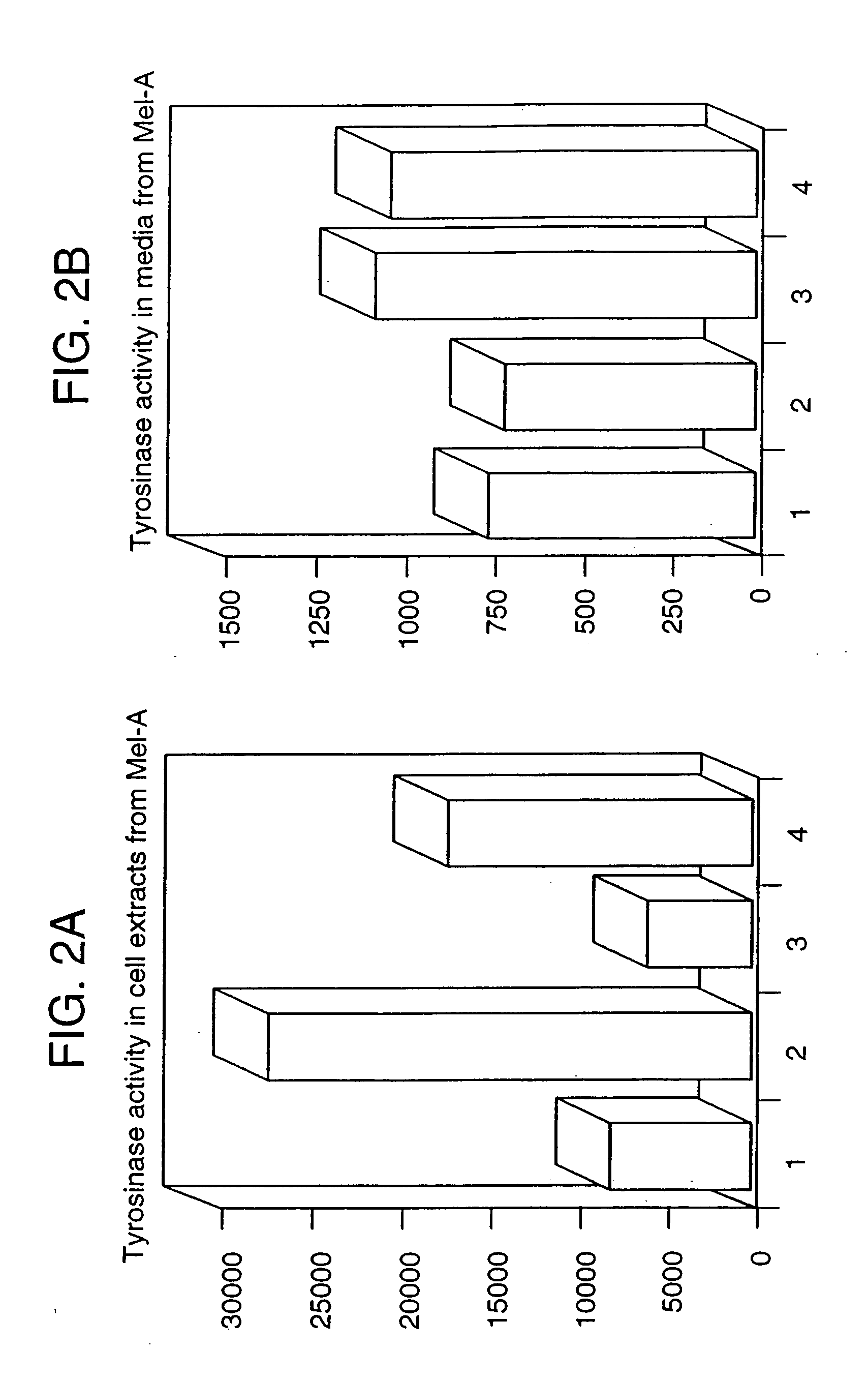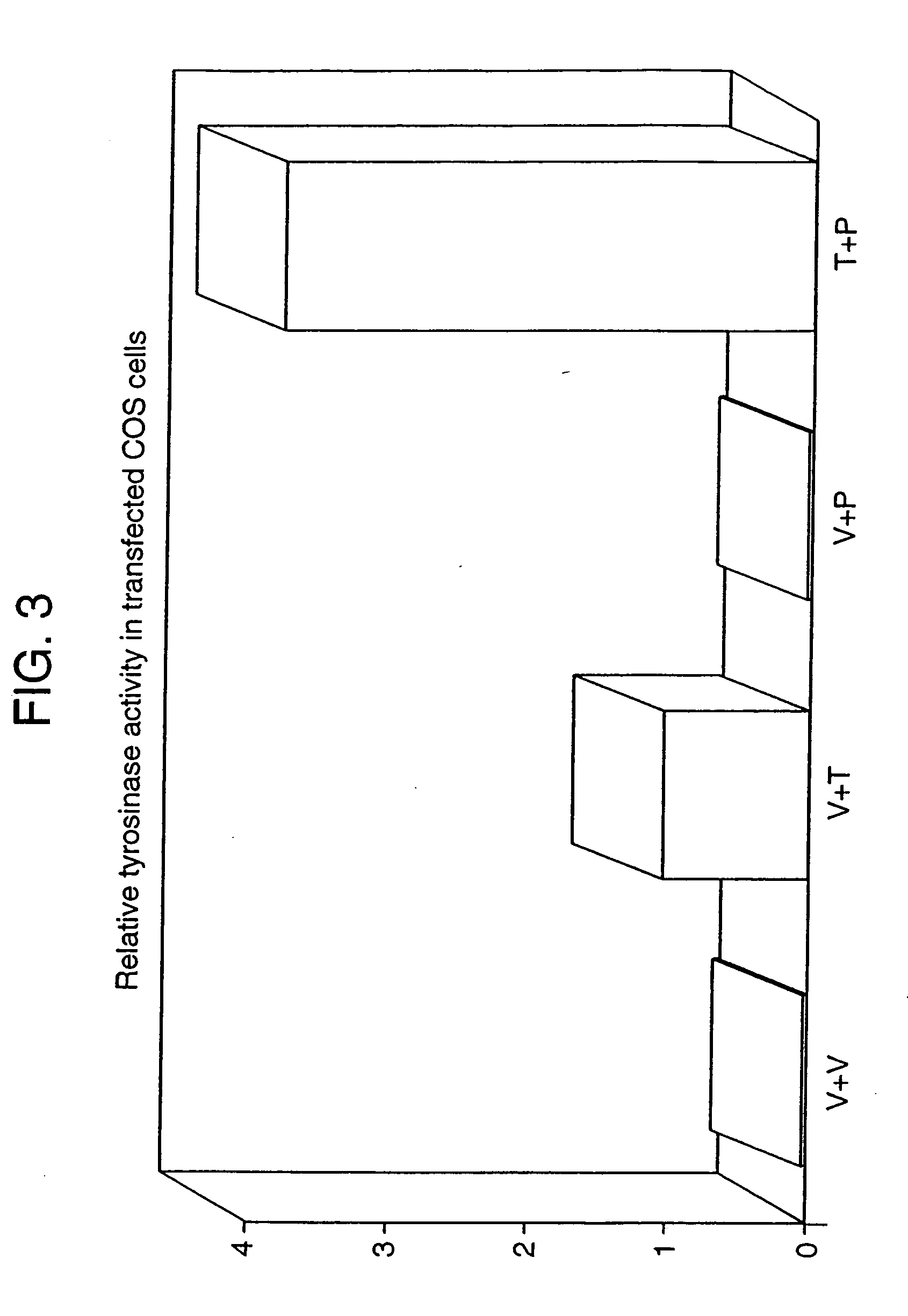Methods and compositions that affect melanogenesis
a technology of melanin and composition, applied in the field of medicine and cell biology, can solve the problems of cosmetic problems such as inappropriate production or overproduction of melanin, pigmentation deficiencies such as albinism, and achieve the effects of decreasing, lowering or preventing the formation of skin pigmentation, and/or inhibiting melanin production
- Summary
- Abstract
- Description
- Claims
- Application Information
AI Technical Summary
Benefits of technology
Problems solved by technology
Method used
Image
Examples
example 1
Targeting Function Screen
[0277] In this example, the effect of P protein on cellular targeting of tyrosinase was investigated. This function was then exploited in a screen for compounds that inhibit the activity of P protein.
[0278] Melan-a cells (a / a, P / P), an immortalized melanocyte line derived from C57BLI6J mice wild type at the p locus (Bennett et al., 1987, Int. J. Cancer 39:414-418), were maintained in culture in Dulbecco's modification of Eagle's medium (DME). Melan-p1 melanocytes from mice lacking all p gene transcripts due to the presence of overlapping deletions (a / a, pcp / p25H) (Sviderskaya et al., 1997, J. Invest. Dermatol. 108:30-34) were maintained in Harn's F10 medium. Both media were supplemented with 10% fetal calf serum, 5% sodium pyruvate, 5% glutamate, 5 units / ml penicillin, 5 μg / ml streptomycin, 1% non-essential amino acids and 200 nM 12-O-tetradecanoyl phorbol 13-acetate. In addition, 200 pM cholera toxin was added to the melan-p1 cells.
[0279] Cells were main...
example 2
Tyrosinase Activity Screen
[0285] In this example, the effect of P protein on the measurable enzymatic activity of tyrosinase from cells genetically engineered to express tyrosinase was investigated. Any melanogenic cell type that expresses both P protein and tyrosinase, or any cell type made to express both P protein and tyrosinase, can be substituted. This function was then exploited in a screen for compounds that inhibit the function of P protein.
[0286] Cultured melan-a melanocytes, as described above in Example 1, were incubated for 48 hours in the presence of benztropine (10 micromolar final concentration), or imipramine (10 micromolar final concentration), or nitroquipazine (30 micromolar final concentration), or left untreated. Cells were washed and extracted with 50 mM Tris-HCl (pH 7.4), 2 mM EDTA, 150 mM NaCl and 1% Triton X-100. Cell extracts were analyzed for tyrosinase activity using a radiometric tyrosine hydroxylase assay (Orlow, S. J. et al., 1990, supra).
[0287] Exp...
example 3
Secretion of Tyrosinase in Melan-p Cells Results from Proteolysis
[0295] While we observed activity of tyrosinase in the medium, Potterf et al. (1998, Exp. Cell Res. 244:319-326) did not detect tyrosinase protein in the medium using αPEP7. Tyrosinase is a type I membrane protein anchored in the membrane, and it is thus likely that proteolysis, which leads to the clipping of the tail, is required for secretion. The truncated protein would not be detected by αPEP7, which is directed against the tail, although the catalytic domains would remain functional. We, therefore, examined the effects of a series of protease inhibitors on the secretion of tyrosinase by melan-a and melan-p1 cells. E64, an epoxysuccinyl peptide and a potent inhibitor of cysteine proteinases was found to be the most effective in reducing the amount of tyrosinase secreted into the media of melan-p1 cells (FIG. 5A), thus demonstrating that secretion of tyrosinase can be inhibited by blocking the activity of cysteinyl...
PUM
| Property | Measurement | Unit |
|---|---|---|
| temperatures | aaaaa | aaaaa |
| flash point | aaaaa | aaaaa |
| melting point | aaaaa | aaaaa |
Abstract
Description
Claims
Application Information
 Login to View More
Login to View More - R&D
- Intellectual Property
- Life Sciences
- Materials
- Tech Scout
- Unparalleled Data Quality
- Higher Quality Content
- 60% Fewer Hallucinations
Browse by: Latest US Patents, China's latest patents, Technical Efficacy Thesaurus, Application Domain, Technology Topic, Popular Technical Reports.
© 2025 PatSnap. All rights reserved.Legal|Privacy policy|Modern Slavery Act Transparency Statement|Sitemap|About US| Contact US: help@patsnap.com



